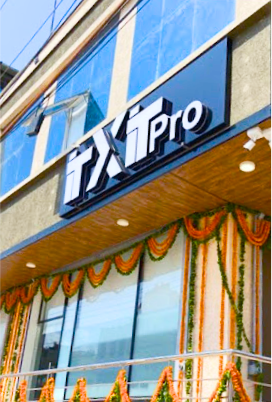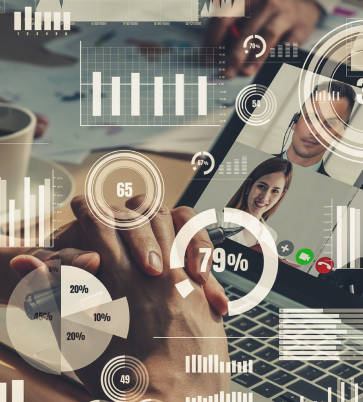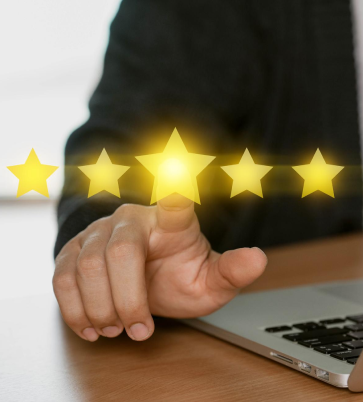Introduction

In the dynamic digital landscape of 2025, social media advertising services have become a cornerstone for businesses aiming to enhance brand visibility, engage target audiences, and drive revenue. With over 4.8 billion people actively using social media worldwide, platforms like Facebook, Instagram, LinkedIn, TikTok, and YouTube have transformed into powerful marketing ecosystems. Social media agencies play a pivotal role in helping businesses leverage these platforms effectively.
This comprehensive guide explores the intricacies of social media advertising services, their benefits, key platforms, strategies for success, and the emerging trends shaping the field. It also addresses common questions through FAQs, providing actionable insights for businesses looking to harness the power of social media ads to achieve measurable revenue growth.
What Are Social Media Advertising Services?
Social media advertising services encompass professional solutions designed to create, manage, and optimize paid ad campaigns on social media platforms. These services are typically provided by a social media marketing agency or specialized professionals who utilize platform-specific tools, analytics, and expertise to maximize campaign performance. Unlike organic social media marketing, which focuses on unpaid content, social media ads involve paid promotions such as sponsored posts, display ads, video ads, and carousel ads.
Key components of these services include:
| Service | Description |
|---|---|
| Campaign Strategy Development | Crafting strategies aligned with business goals and target audiences. |
| Ad Creation | Designing engaging ad content, including graphics, videos, and copywriting. |
| Audience Targeting | Using platform analytics to reach specific demographics, interests, and behaviors. |
| Budget Management | Allocating and optimizing ad spend for the best ROI. |
| Performance Tracking | Monitoring metrics like impressions, clicks, and conversions to refine campaigns. |
| A/B Testing | Experimenting with ad formats, visuals, and messaging to identify what works best. |
Benefits of Social Media Advertising
Social media platforms offer advanced targeting capabilities that allow businesses to reach highly specific audiences. For example, Facebook’s ad platform enables advertisers to target users based on age, gender, location, interests, job titles, and even life events like engagements or recent purchases. This precision ensures that your ads are seen by those most likely to convert, maximizing campaign efficiency.
Social media advertising offers several advantages over traditional marketing channels, making it a vital tool for businesses:
1. Precise Audience Targeting
Platforms like Facebook and Instagram allow advertisers to target users based on age, gender, location, interests, and behaviors. This precision ensures ads reach those most likely to convert, enhancing campaign efficiency.
2. Cost-Effectiveness
Compared to traditional media like TV or print, social media ads are affordable, with flexible pricing models like pay-per-click (PPC) or cost-per-impression (CPM). Businesses can start with small budgets and scale as they see results.
3. Enhanced Brand Visibility
With organic reach declining due to algorithm changes, paid ads ensure your brand remains visible in users’ feeds, stories, or sidebars, increasing engagement opportunities.
4. Measurable Results
Social media platforms provide robust analytics to track campaign performance in real-time. Metrics such as impressions, clicks, conversions, and engagement rates offer insights for continuous optimization.
5. Diverse Ad Formats
From short-form videos on TikTok to professional LinkedIn carousel ads, platforms offer a variety of formats to suit different marketing goals, allowing businesses to experiment creatively.
Key Social Media Platforms for Advertising in 2025
| Platform | User Base | Key Ad Formats | Best For |
|---|---|---|---|
| 2.9B+ monthly active users | Image ads, video ads, carousel ads, lead generation forms | Broad audience targeting, e-commerce, lead generation | |
| 2B+ users | Stories, Reels, Shopping ads | Visually-driven brands, younger audiences, lifestyle products | |
| 900M+ professionals | Sponsored content, InMail ads, text ads | B2B marketing, professional services, high-quality leads | |
| TikTok | 1B+ users | Short-form video ads, branded challenges, influencer collaborations | Creative campaigns, Gen Z and Millennials, viral content |
| YouTube | 2.5B+ users | Skippable/non-skippable ads, bumper ads, sponsored content | Storytelling, product demonstrations, broad reach |
| X | Millions of active users | Promoted posts, accounts, trends | Real-time engagement, B2B, tech brands |
Facebook:
With over 2.9 billion monthly active users, Facebook remains the largest social media platform for advertising. Its ad manager allows businesses to create highly targeted campaigns using demographic, behavioral, and interest-based filters. Popular ad formats include image ads, video ads, carousel ads, and lead generation ads. Facebook’s integration with Instagram also enables cross-platform campaigns. Its advanced ad manager supports highly targeted campaigns, making it ideal for businesses of all sizes.
Instagram:
With over 2 billion users, it is ideal for visually driven brands. Its ad formats, such as Stories, Reels, and Shop ads, are perfect for showcasing products and engaging younger audiences. Instagram’s focus on aesthetics makes it a go-to platform for lifestyle, fashion, and beauty brands.Perfect for visually appealing brands, with formats like Reels and Shopping ads driving engagement.
LinkedIn:
LinkedIn is the premier platform for B2B advertising, with over 900 million professionals. Sponsored content, InMail ads, and text ads enable businesses to target decision-makers by industry, job title, and company size. LinkedIn is ideal for generating high-quality leads and promoting professional services.The go-to platform for B2B advertising, targeting professionals by industry and job title.
TikTok:
TikTok’s explosive growth, with over 1 billion users, has made it a hotspot for creative advertising. Its short-form video ads, branded challenges, and influencer collaborations resonate with Gen Z and Millennials. TikTok is perfect for brands looking to create viral, engaging content.Excels in creative, viral content for younger audiences.
YouTube: Ideal for video-based storytelling and product demos.
X:
A fast-paced environment is excellent for real-time engagement and brand conversations. Promoted tweets, accounts, and trends allow businesses to amplify their messages and reach audiences interested in trending topics. X ads are particularly effective for B2B companies and tech brands Effective for real-time engagement and trending topics.
YouTube:
As the second-largest search engine, YouTube offers video advertising opportunities through skippable and non-skippable ads, bumper ads, and sponsored content. With over 2.5 billion users, it’s an excellent platform for storytelling and product demonstrations.
How Social Media Advertising Drives Revenue
Social media advertising services deliver measurable results that directly impact revenue:
Increased Website Traffic: Targeted ads drive qualified traffic to your website, increasing product views and sales, especially for e-commerce businesses.
Lead Generation: Lead generation ads collect user information directly within platforms, enabling businesses to nurture leads through sales funnels.
Higher Conversion Rates: Precise targeting and compelling CTAs result in higher conversion rates compared to traditional advertising.
Customer Retention: Ads targeting existing customers with personalized offers or re-engagement campaigns enhance retention, which is often more cost-effective than acquiring new customers.
Brand Loyalty and Advocacy: Engaging campaigns build trust and loyalty, encouraging customers to recommend your brand, creating a ripple effect for revenue growth
Strategies for Effective Social Media Advertising in 2025
To maximize the impact of social media ads, businesses should adopt strategies aligned with 2025 trends:
| Strategy | Recommendation |
|---|---|
| Leverage AI for Targeting | Use AI tools like Meta’s Advantage+ to analyze user data and automatically identify high-performing audience segments. |
| Focus on Video Content | Prioritize short-form videos (Reels, TikTok) for attention and long-form videos (YouTube) for storytelling and brand-building. |
| Embrace Authenticity | Share real, behind-the-scenes or user-generated content to foster transparency and audience trust. |
| Utilize Shoppable Ads | Implement platform-native shopping ads to drive direct purchases, especially effective on Instagram and Facebook. |
| Explore Emerging Platforms | Test new platforms like TikTok and leverage the latest features on established channels for broader engagement. |
| Prioritize Social Listening | Use tools like Hootsuite to monitor brand mentions, trends, and customer sentiment to inform content and ad strategy. |
| Optimize for Mobile | Design all creatives for mobile-first consumption—use vertical video formats and compress files for fast load times. |
| Retargeting and Remarketing | Re-engage users who’ve interacted with your brand using retargeting strategies to boost conversions. |
Choosing the Right Social Media Advertising Service Provider
Partnering with a social media agency is key to success. Consider:
- Experience and Expertise: Agencies like ITXITPro offer localized expertise for the Indian market.
- Customized Solutions: Ensure tailored strategies for your business needs.
- Transparency: Look for clear reporting on campaign performance.
- Budget Flexibility: Choose providers with flexible pricing, like ITXITPro.
- Client Testimonials: Review case studies for reliability.
A social media agency in USA may focus on global markets, while a social media agency in India like ITXITPro understands local nuances, making it ideal for Indian businesses.
Challenges in Social Media Advertising
Despite its potential, social media advertising faces challenges:
- Ad Fatigue: Repetitive ads reduce engagement. Refresh creatives regularly.
- Algorithm Changes: Platform updates can impact reach, requiring adaptive strategies.
- Competition: High competition increases costs. Effective targeting helps.
- Content Overload: Innovative, authentic content is needed to stand out.Professional social media marketing services can navigate these challenges with expertise.
Need Help? Get in Touch With Us!
The Future of Social Media Advertising
Emerging trends shaping social media advertising in 2025 include:
| Trend | Description |
|---|---|
| AI-Powered Advertising | AI enhances targeting and personalization. |
| Augmented Reality (AR) Ads | AR filters on Instagram and Snapchat offer immersive experiences. |
| Social Commerce | Shoppable ads and in-platform checkouts streamline purchases. |
| Video Dominance | Short- and long-form videos, including live streaming, remain key. |
| Privacy Regulations | Stricter laws will push reliance on first-party data. |
Conclusion
Social media advertising services are a game-changer for businesses aiming to drive revenue in 2025. With precise targeting, diverse ad formats, and measurable results, these services empower brands to connect with audiences and boost sales. Partnering with a social media marketing agency like ITXITPro ensures businesses stay ahead of trends like AI, shoppable ads, and video content. As platforms evolve, staying innovative will be key to sustained success. Invest in social media ads today to propel your brand toward greater visibility and profitability.
FAQs
How can AI be used in social media advertising?
AI is taking social media advertising far beyond just scheduled posts and basic targeting. Today, it plays a strategic role in understanding user behavior patterns and adjusting campaigns in real time. From creating lookalike audiences to predicting which creatives will perform best, AI helps brands reach the right people at the right time. It also powers smart chatbots that handle customer queries instantly on platforms like Facebook and Instagram, improving user experience without manual intervention. For businesses, this means better engagement, reduced ad waste, and stronger returns on their marketing investments.
What are the benefits of shoppable ads for businesses?
Shoppable ads allow users to go from discovery to purchase in just a few taps, without leaving the app. This seamless shopping experience removes friction from the buyer’s journey and boosts impulse purchases—especially for fashion, lifestyle, and D2C brands. More importantly, these ads give businesses access to valuable insights like product views, add-to-carts, and conversions, helping them understand what customers want. For businesses selling online, this format helps shorten the sales cycle and improve ROI with trackable, performance-driven results.
How can businesses ensure authenticity in their social media content?
Being real is more important than being perfect on social media. Audiences today connect with content that feels honest and relatable. This could be behind-the-scenes photos, customer shout-outs, or raw, unfiltered moments from your team. Sharing stories, showing how your products are made, or responding publicly to feedback shows you’re human—and trustworthy. Even small efforts like using your own team in campaigns instead of stock photos can make a big difference. Authenticity builds loyalty and long-term relationships, not just likes and shares.
Which social media platforms are best for B2B marketing in 2025?
For B2B brands, LinkedIn is still the go-to platform. It offers unmatched targeting based on job titles, industries, and company size, making it ideal for lead generation and networking. That said, platforms like X (formerly Twitter) are gaining ground for thought leadership and real-time updates, especially in the tech and finance sectors. Facebook also works well in niche B2B industries and local services where community building matters. Depending on the business type, combining LinkedIn with email retargeting and YouTube content can deliver a well-rounded B2B presence.
How can small businesses in India leverage social media advertising effectively?
For small businesses in India, smart targeting and local relevance are key to success on social media. Platforms like Facebook and Instagram allow precise geo-targeting, which is ideal for promoting offers within your city or region. Keep your content culturally relevant—using local languages or referencing festivals and local trends can significantly boost engagement. Start with smaller ad budgets and run A/B tests to see what works. If you’re unsure where to begin, partnering with a performance-focused agency like ITXITPro can help you create cost-effective campaigns tailored to your market.
What role does video content play in social media advertising today?
Video is currently the most impactful format on social media—people stop scrolling for movement. Short videos (under 60 seconds) work best for quick tips, product demos, or promotional reels, while longer videos can help explain services or tell brand stories in depth. Platforms like Instagram Reels, TikTok, and YouTube Shorts are perfect for discovery, while Facebook and LinkedIn support more informative or testimonial-style videos. Whether you’re a startup or an established brand, incorporating video into your content mix can significantly increase your reach and engagement.
How can businesses measure the ROI of their social media advertising campaigns?
To measure ROI effectively, businesses must track both performance metrics and business outcomes. Start by defining clear goals: Is the campaign aimed at generating leads, driving traffic, or boosting sales? Then, monitor key metrics like click-through rates, cost per result, and conversions using tools like Meta Business Suite, Google Analytics, or platform-specific dashboards. It’s also useful to set up proper tracking through UTM parameters and conversion pixels to ensure data accuracy. Over time, this helps you understand which channels or creatives are actually delivering value—and where to reinvest your budget for better returns.
How often should a business post on social media to stay visible?
There’s no fixed rule, but regular posting is key to staying relevant. Most brands see results by posting 3–5 times a week on platforms like Instagram or Facebook. For platforms like Twitter (X), daily engagement is more effective due to the fast-moving nature of the feed. The idea isn’t to flood timelines but to maintain a consistent presence with valuable, well-timed content.
What’s the difference between boosting a post and running a paid ad?
Boosting a post is like giving your regular content a quick push—it’s simple and works well for likes, comments, and reach. But if you’re looking for more precise targeting, lead generation, or conversions, running ads through Meta Ads Manager or LinkedIn Campaign Manager gives you far more control. It lets you customize creatives, audiences, objectives, and tracking—all tailored to your business goals.
Should we focus more on reach or engagement when running ads?
It depends on your campaign objectives. If you’re building brand awareness or launching something new, reach helps you get in front of as many relevant people as possible. But if your goal is to generate leads, build community, or drive website traffic, engagement becomes the priority. Ideally, a balanced strategy works best—start with reach, nurture through engagement.
What kind of content is trending on social media in 2025?
Right now, short-form videos are dominating. Reels, TikToks, and YouTube Shorts are driving the most attention. Beyond that, carousels, infographics, memes, and user-generated content still perform well. Consumers respond best to content that’s authentic, quick to digest, and visually engaging—especially when it includes real people or real stories.
Is influencer marketing still relevant for small businesses?
Absolutely—and it’s become more accessible. The shift is toward micro and nano influencers who have smaller but highly loyal audiences. These collaborations often feel more genuine and drive better conversion rates, especially for local businesses or niche brands. You don’t need a celebrity—you need someone your audience already trusts.
Are hashtags still useful in social media marketing?
Hashtags still help with content discovery, especially on platforms like Instagram, TikTok, and LinkedIn. However, their impact has reduced as algorithms prioritize engagement and relevance over hashtag count. Instead of stuffing 20+ tags, use 3–5 that are highly relevant to your post and audience.
How can we repurpose content across different social media platforms?
Content doesn’t need to be recreated every time. A blog post can become a carousel on Instagram, a thread on X, or a talking-point video on LinkedIn. The key is to tweak the format and tone to fit each platform’s user behavior while keeping the message aligned with your brand.
Can we depend only on organic reach anymore?
Organic reach is valuable but limited, especially on saturated platforms like Facebook and Instagram. Relying solely on it can restrict growth. A strong strategy combines consistent organic content with strategic ad spending to expand reach, drive engagement, and generate leads.
What is social listening and why does it matter?
Social listening is about tracking what people are saying about your brand, competitors, or industry online. It helps you catch feedback, understand public sentiment, and even identify trends or pain points before they become major issues. For brands that care about reputation and community, it’s an essential part of their marketing toolkit.
How can we stay ahead of frequent algorithm changes?
While you can’t control algorithm updates, you can future-proof your content. Focus on creating value—content that educates, entertains, or solves a problem. Stay active in industry forums, follow reliable digital marketing sources, and regularly test different formats to see what resonates best with your audience.
Do we need unique strategies for each platform?
Yes, and here’s why: each platform caters to a different audience and content style. Instagram favors aesthetics and short videos, LinkedIn leans toward professional insights, and TikTok thrives on trends and raw content. While your core message stays the same, the format, tone, and timing should be adapted accordingly.
What are some effective ways to generate leads from social media?
Lead generation on social platforms can be done through native lead forms (like Facebook Lead Ads), gated resources (eBooks, webinars), contests, or direct inquiry CTAs via WhatsApp or DMs. Combine these with remarketing strategies to move users from interest to conversion effectively.















